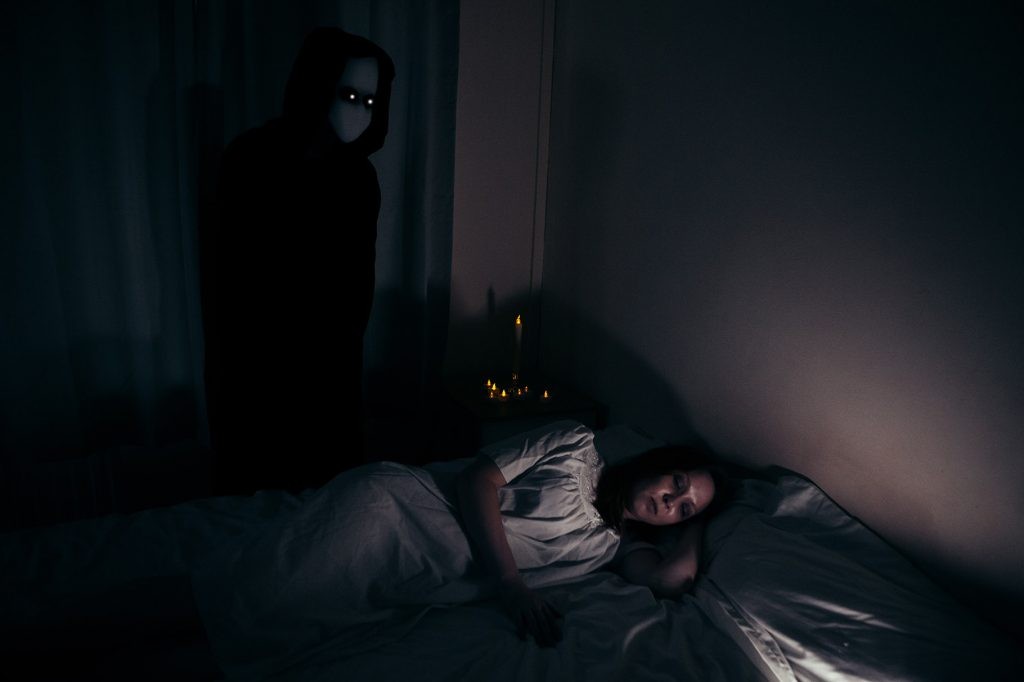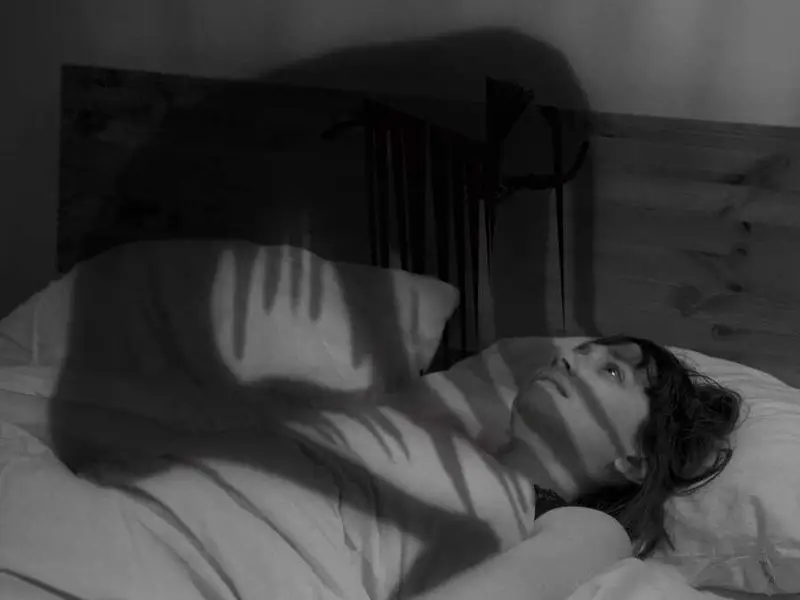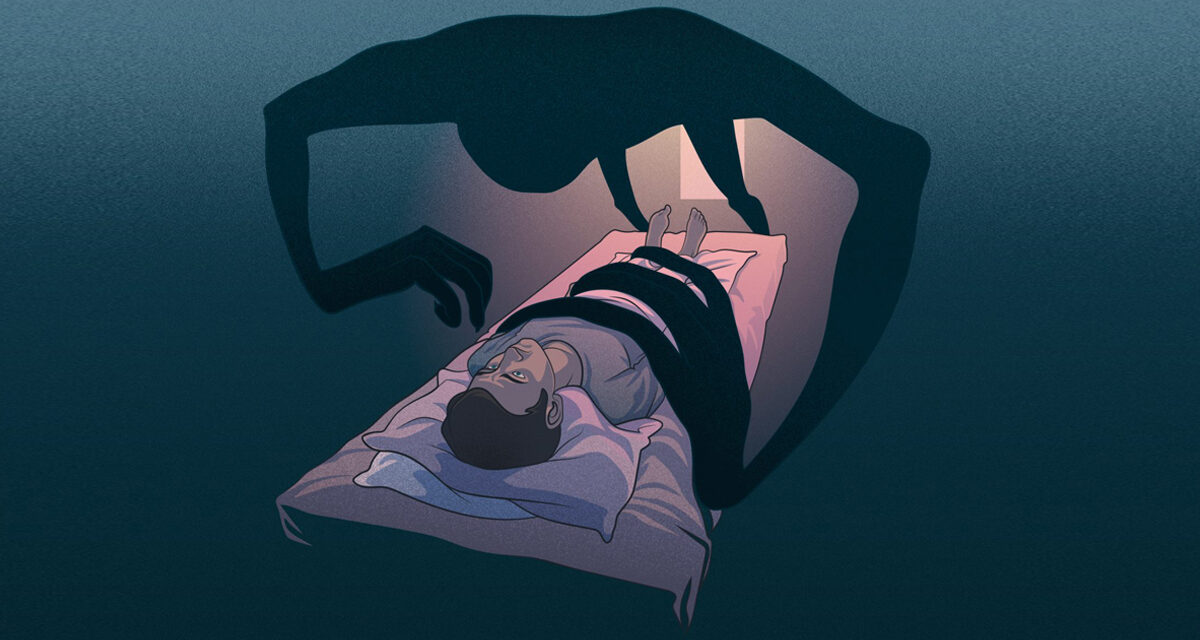If you’ve ever woken up in the middle of the night, eyes wide open but body frozen, heart racing while a shadowy figure sits on your chest, congratulations!!! You’ve probably experienced sleep paralysis. It sounds like something out of a horror movie, but for millions of people around the world, it’s real… and terrifying.
What Exactly Is Sleep Paralysis?
Let’s break it down: sleep paralysis happens when your brain wakes up, but your body doesn’t. Normally, when we sleep, our muscles are in a state of temporary paralysis to stop us from acting out our dreams (imagine punching the wall every time you dream of fighting zombies).
But sometimes, your mind becomes aware before your body does: leaving you trapped in a weird state between dreaming and being awake. You can’t move, can’t speak, and to make it worse, your half-asleep brain often adds a spooky hallucination just for fun. Lucky you.

Why Does It Happen?
Science says sleep paralysis is pretty common, especially if you’re sleep-deprived, stressed, have irregular sleep schedules or jet lag. Some researchers also link it to conditions like narcolepsy.
Basically, your REM (Rapid Eye Movement) sleep gets messy. You wake up when your body still thinks you’re dreaming. The brain’s “off switch” for your muscles is still on, so you stay frozen while fully conscious. Fun, right?
The Creepy Hallucinations
This is where sleep paralysis turns from weird to nightmare fuel. Many people feel a weight on their chest, like something sitting on them, or see dark figures in the corner of their room. Some hear whispers or feel a presence watching them.
Cultures around the world have their own explanations for this. In Mexico, they call it “se te subió el muerto” (the dead climbed on you). In Japanese folklore, there’s the kanashibari, an evil spirit that pins you down. In Scandinavia, it’s the Mare, a witch that sits on your chest and gives you bad dreams. Creepy legends exist for a reason: the experience is so real it makes people believe there’s something supernatural going on.

Can You Stop It?
Good news: sleep paralysis isn’t dangerous, just terrifying. Most episodes last a few seconds to a couple of minutes. But if you want to reduce your chances, sleep experts say the best thing is to improve your sleep habits:
- Stick to a regular sleep schedule
- Get enough rest
- Sleep on your side instead of your back (people often get sleep paralysis while lying on their backs)
- Reduce stress before bed
If you wake up frozen, try to focus on moving a finger or toe first. Tiny movements can help snap your body out of it.
Why Do We Love Scaring Ourselves with It?
Despite being terrifying, sleep paralysis has inspired tons of horror stories, movies, books and viral TikToks. Maybe it’s because it’s one of the few nightmares that can happen when you’re technically awake. Some people even use it to trigger lucid dreaming, a state where you can control your dreams. Brave souls.
There’s also something fascinating about how the brain mixes reality and fantasy so perfectly. The monsters aren’t real, but your mind makes them feel real enough to haunt you long after you wake up.
A Reminder That Our Minds Are Wild
So, next time you hear someone say, “It felt like a demon was sitting on my chest,” you’ll know the science, and the stories behind it. Sleep paralysis is proof that our brains can be our best friends and our worst enemies at the same time.
Scary? Absolutely. Dangerous? Nope. Just your mind playing spooky games while your body catches up. Sweet dreams, and don’t forget to sleep well tonight. You wouldn’t want the shadow to pay you a visit, right?

If you liked the article, watch this brief video about the explanation of the sleep paralysis:
Know more about the author:
https://www.instagram.com/alxs._.mapl?igsh=MXVtYjlmYm1pbWR6dA%3D%3D&utm_source=qr
















